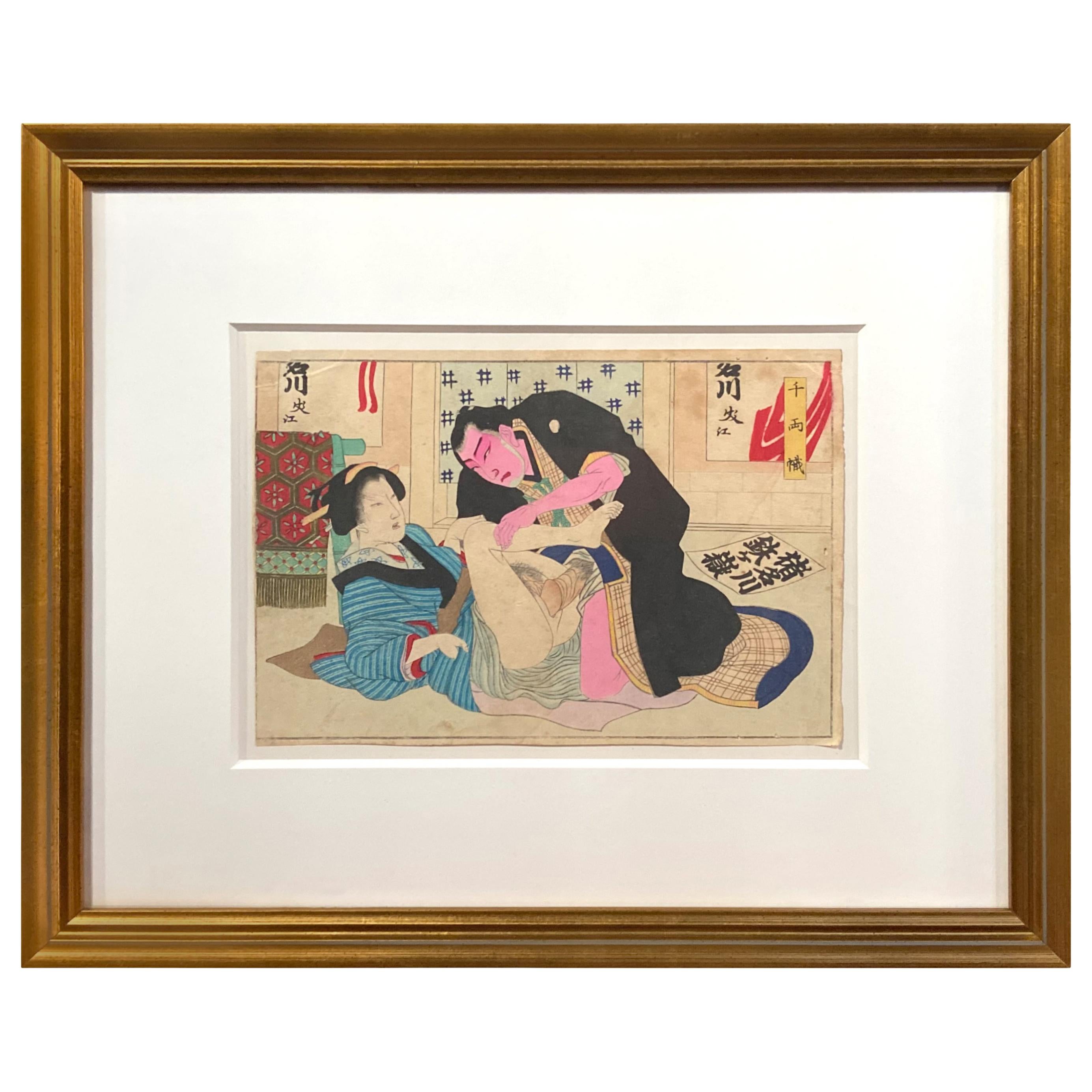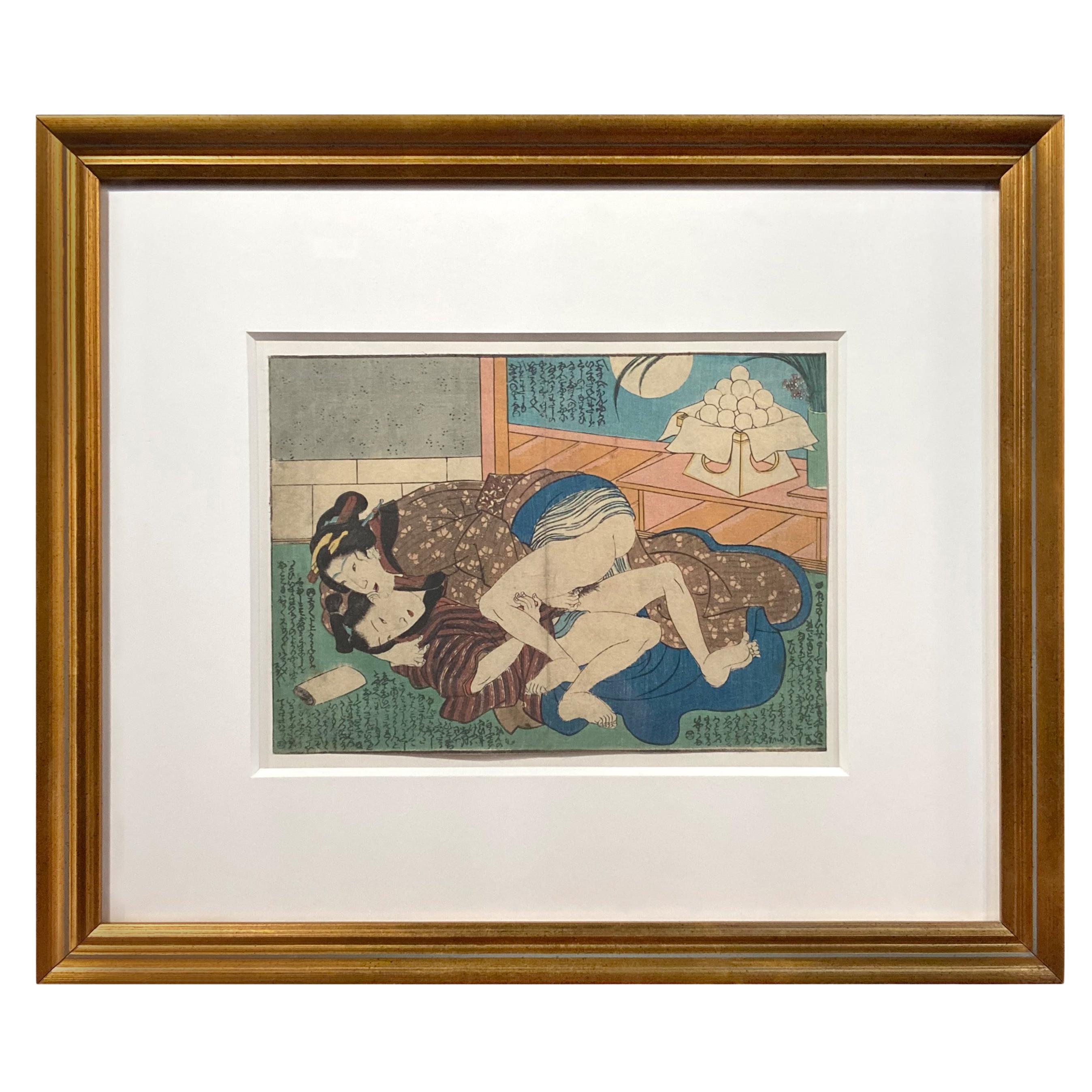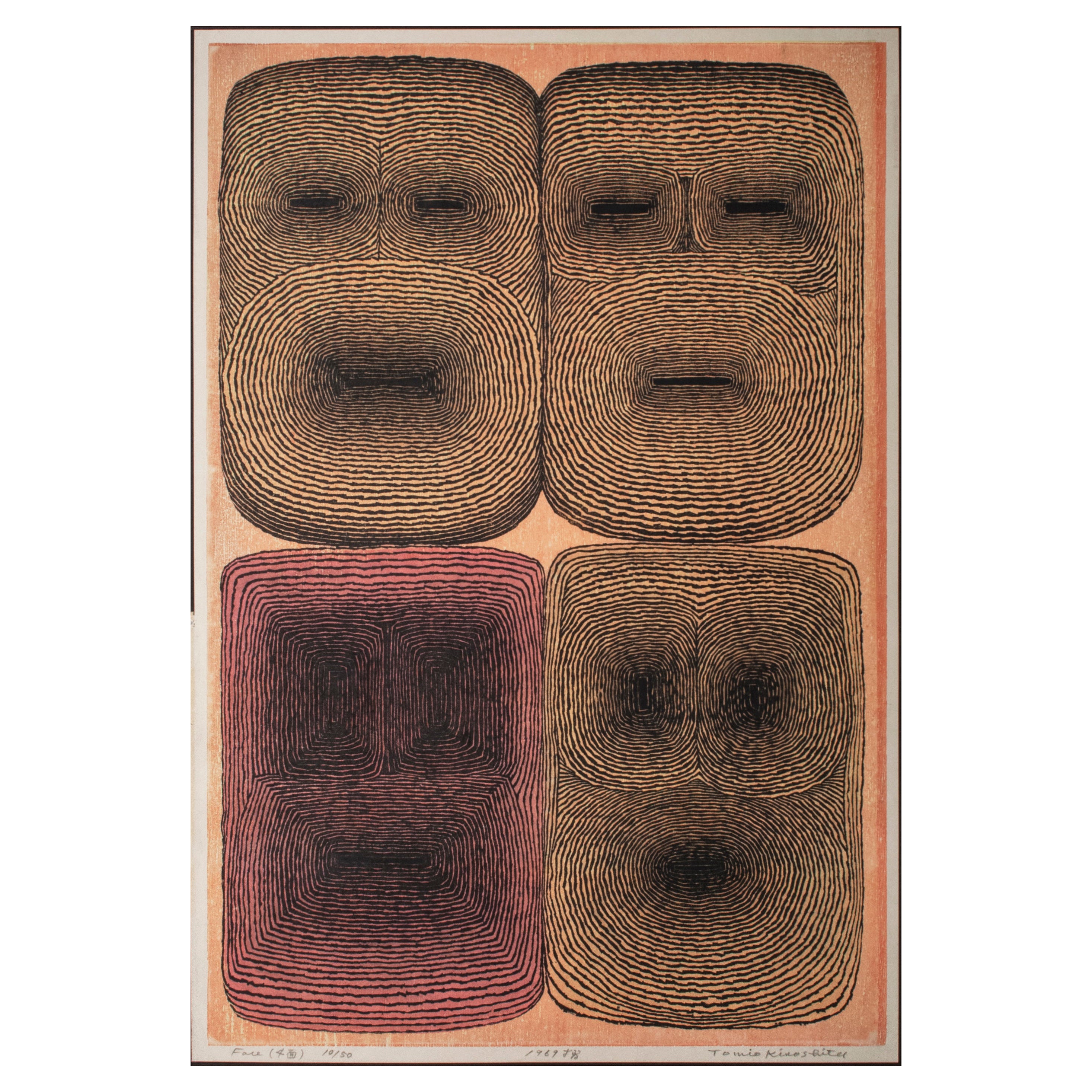Items Similar to Erotic Woodblocks Print ‘Shunga’, Kitagawa Utamaro
Want more images or videos?
Request additional images or videos from the seller
1 of 6
Erotic Woodblocks Print ‘Shunga’, Kitagawa Utamaro
About the Item
Negai no itoguchi (Unravelling the threads of desire), 1799
Oban yoko-e
Erotic prints have a primary role in the Japanese art history: sexual pleasure is transported on paper with a magnificent expression and extreme stylization.
The word shunga itself is, in fact, rich in metaphoric symbols, as "spring painting" would refer to the season that Japanese people most love, rich of mystic tension and erotic emotions.
The series Negai no itoguchi (Unraveling the threads of desire) was published in 1799 as a book with twelve love scenes.
- Dimensions:Height: 0.04 in (1 mm)Width: 14.97 in (38 cm)Depth: 10.01 in (25.4 cm)
- Materials and Techniques:
- Place of Origin:
- Period:
- Date of Manufacture:1799
- Condition:
- Seller Location:Milano, IT
- Reference Number:
About the Seller
5.0
Recognized Seller
These prestigious sellers are industry leaders and represent the highest echelon for item quality and design.
Established in 2005
1stDibs seller since 2018
10 sales on 1stDibs
Typical response time: 2 hours
- ShippingRetrieving quote...Ships From: Milano, Italy
- Return PolicyA return for this item may be initiated within 7 days of delivery.
More From This SellerView All
- Painting by Maeda Josaku (Japan, 1926 – 2007), Paysage Humain N° 14, 1960Located in Milano, ITSigned: Josaku Meda. 60. Singed on the back: "Paysage humain" N°14 / 7.1960 / Josaku MAEDA / à Paris Exhibitions: Turin (Italy), Gissi Gallery, Collettiv...Category
20th Century Japanese Paintings and Screens
MaterialsCanvas
- Pair of Japanese Two-Fold Screens with Flower Arrangements and Rare BirdsLocated in Milano, ITKaramono with flower arrangements and rare birds Edo period, 18th century Pair of two-panel folding screens Ink, colors, gofun and gold leaf on paper Each 170 by 165 cm ...Category
Antique 18th Century Japanese Paintings and Screens
MaterialsPaper
- Japanese Two-Panel Screen with Scenes at the Pleasure Quarters, 18th CenturyLocated in Milano, ITIn the pleasure districts, the stringent codes were meant to be forgotten. In this painting, some clients are watching from outside the teahouse, while some are entering, one of them...Category
Antique 18th Century Japanese Paintings and Screens
MaterialsPaper
- Japanese Folding Screen with a Spring Landscape, Kano School, 19th CenturyLocated in Milano, ITThe scene is dominated by a plum tree in bloom under which a couple of paradise birds is courting. The screen is crossed by a luxuriant creek, a typical feature of the springtime.Category
Antique 19th Century Japanese Paintings and Screens
MaterialsPaper
- Pair of Six-Panel Folding Screens with Peonies and Other FlowersLocated in Milano, ITA pair of six-panel folding screens with peonies and other flowers 19th century Each 72.5 by 241 cm Small and elegant screens with an ideal scene depicting peonies and other flower species...Category
Antique 19th Century Japanese Paintings and Screens
MaterialsPaper
- Pair of Japanese Screens with Flowers of the Four Seasons, 19th CenturyLocated in Milano, ITThis pair of screens belongs to a genre of lyrical paintings of flowers, grasses, and other plants that flourished around the middle of the 17th century and became a specialty of the Sôtatsu studio. The use of a rather complex composition of clusters of flowers and the puddling of ink was initiated by Tawaraya Sôtatsu, the founder of the Rimpa School, who was active from 1600 until 1642. The screens are abstract and decorative but there is, at the same time, a keen sense of naturalism not only in the attention to accurate detail but in the profusion of vegetation. The passage of the year is symbolized by the variety of plants that bloom in different seasons. The tarashikomi - here used on leaves, petals and trunks - is a Classic Rinpa technique in which pale black ink or a color is brushed onto an area of a painting and then either darker ink, or the same or a contrasting color, is dropped into the first before it has completely dried, creating an effect of pooled colors with softly blurred edges. Its delicacy, preciousness, and effeminacy are identified with the over-refinement of its patrons, while the vigor, monochromatic discipline, sharp observation, and virile forms of the Kano school are a testament to the vitality of the rising warrior class. The plants are almost all identifiable: in the summer-spring part, you can find wheat, buttercups, irises, begonias, hydrangeas, coral bells...Category
Antique 19th Century Japanese Paintings and Screens
MaterialsPaper
You May Also Like
- Antique Japanese Erotic Shunga Woodblock Print of a Couple in Gilt FrameLocated in Yonkers, NYAn antique Japanese Shunga woodblock print in gilt frame depicting a man and a woman making love. Created in Japan, this woodblock print called...Category
Antique 19th Century Japanese Prints
MaterialsGlass, Wood
- Antique Framed Japanese Shunga Woodblock Print of a Couple Making LoveLocated in Yonkers, NYAn antique Japanese Shunga woodblock print in gilt frame depicting a man and a woman making love. Created in Japan, this woodblock print called...Category
Antique 19th Century Japanese Prints
MaterialsGlass, Wood
- Antique Framed Japanese Shunga Woodblock Print of Two Women Making LoveLocated in Yonkers, NYAn antique Japanese Shunga woodblock print in gilt frame depicting two women making love. Created in Japan, this woodblock print called a Shung...Category
Antique 19th Century Japanese Prints
MaterialsGlass, Wood, Paint
- Antique Framed Japanese Shunga Woodblock Print of a Man and a Woman Making LoveLocated in Yonkers, NYAn antique Japanese Shunga woodblock print in gilt frame depicting a man and a woman making love. Created in Japan, this woodblock print called...Category
Antique 19th Century Japanese Prints
MaterialsGlass, Wood, Paint
- Japanese Color Woodblock Print by Toyohara ChikanobuBy Toyohara ChikanobuLocated in New York, NYThis Meiji-period color woodblock by Toyohara Chikanobu (1838-1912) depicts three elegant female courtiers in traditional dress taking refreshments. Th...Category
Antique Late 19th Century Japanese Meiji Prints
MaterialsPaper
- 1969 Graphic Woodblock Print by Tomio Kinoshita, JapanBy Tomio KinoshitaLocated in Point Richmond, CAFaces (4 Faces), 1969 Tomio Kinoshita (1923-2014), Japan Woodblock print Paper, pigment, sumi ink Image: 27 high by 18.25 inches wide (68.5 by 46.4 cm) Paper size: 28 high by 19...Category
Vintage 1960s Japanese Mid-Century Modern Prints
MaterialsPaper
Recently Viewed
View AllMore Ways To Browse
Asian Prints Antique
Erotic Furniture
Asian Antique Book
Asian Art Woodblock Print
Asian Woodblock
Asian Art Woodblock
Asian Prints Woodblock
Antique Erotic Furniture
Antique Japanese Book Prints
Japanese Woodblock Prints Book
Asia Erotic
Asian Erotic
Japanese Shunga
Shunga Prints
Asian Erotic Art
Utamaro Kitagawa
Japanese Woodblock Book
Asian Erotic Paintings





